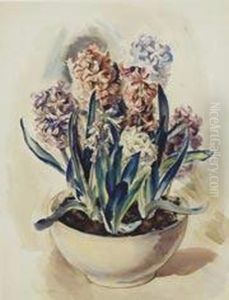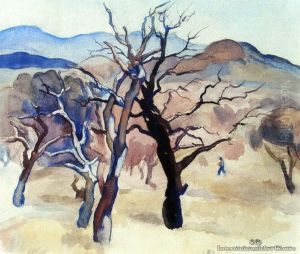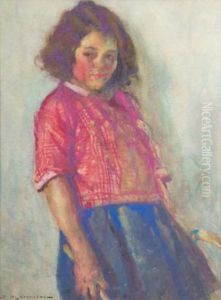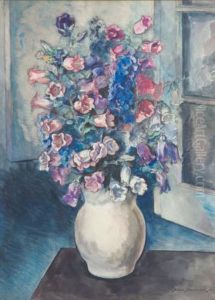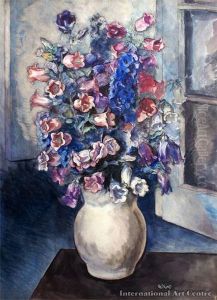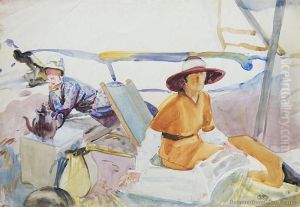Maud Sherwood Jewett Paintings
Maud Sherwood Jewett, born in 1873 in New Zealand, was an artist whose work significantly contributed to the country's cultural landscape. Despite being lesser known compared to her contemporaries, Jewett's artistic journey and contributions were influential in New Zealand's art history. She was particularly known for her watercolor paintings, which often depicted New Zealand's unique flora and landscapes, showcasing her deep appreciation and understanding of her natural surroundings.
Jewett's artistic talents were recognized early on, and she sought to refine her skills through formal education. She studied art in both New Zealand and abroad, which allowed her to develop a distinctive style that combined elements of European art traditions with the natural beauty of her homeland. Her work was characterized by a delicate touch and a masterful use of color, which brought her subjects to life on the canvas.
Throughout her career, Jewett exhibited her work in various galleries and exhibitions, both in New Zealand and internationally. Her paintings were well received, earning her accolades and recognition among her peers. Despite the challenges faced by women artists during her time, Jewett managed to carve out a successful career for herself, contributing significantly to the development of New Zealand's art scene.
Jewett was also involved in the arts community, advocating for the appreciation and preservation of New Zealand's natural beauty through her art. She was a member of several art societies and contributed to the promotion of art education in the country. Her legacy continues to inspire new generations of artists in New Zealand and beyond.
Maud Sherwood Jewett passed away in 1953, leaving behind a rich body of work that continues to be celebrated for its beauty and its contribution to New Zealand's artistic heritage. Her paintings remain a testament to her skill as an artist and her love for the natural world, capturing the essence of New Zealand's landscapes and flora for posterity.
